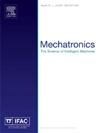在没有地空通信的情况下回收移动旋翼无人机:双级跟踪装置的系统与控制
IF 3.1
3区 计算机科学
Q2 AUTOMATION & CONTROL SYSTEMS
引用次数: 0
摘要
使用单级动态跟踪装置回收移动转子无人飞行器(UAV)是一项重大挑战,尤其是在两个系统之间没有实时通信的情况下。本研究提出了一种由无人地面飞行器(UGV)和斯图尔特平台组成的双阶段跟踪系统,旨在动态跟踪和回收无人飞行器。首先,设计了一种结合卡尔曼滤波(KF)和曲线拟合的观测算法来估计和完成无人机的状态并预测其轨迹。随后,引入解耦双阶段跟踪控制结构,整合两个独立的受控子系统。具体来说,在 UGV 控制器中,采用了模型预测控制 (MPC),利用绝对运动学增强动态跟踪能力。为 Stewart 回收平台开发了基于相对运动学的运动跟踪算法,以补偿 UGV 跟踪误差并提高跟踪精度。为验证所提议的双级跟踪系统的可行性和有效性,进行了动态回收模拟和实验。结果表明,该系统能够在具有探测噪声和目标轨迹干扰的复杂环境中,在不进行实时通信的情况下动态跟踪和回收无人机。本文章由计算机程序翻译,如有差异,请以英文原文为准。
Recover a moving rotor UAV without ground–air communications: System and control of a dual-stage tracking device
Recovering a moving rotor unmanned aerial vehicle (UAV) using a single-stage dynamic tracking device poses a significant challenge, particularly without real-time communication between the two systems. This study presents a dual-stage tracking system comprising an unmanned ground vehicle (UGV) and a Stewart platform, aimed at dynamically tracking and recovering the UAV. Firstly, an observation algorithm combining Kalman filtering (KF) and curve fitting is designed to estimate and complete the drone’s states and predict its trajectory. Subsequently, a decoupled dual-stage tracking control structure is introduced, integrating two independent controlled subsystems. Specifically, in the UGV controller, the model predictive control (MPC) is employed to enhance dynamic tracking capabilities using absolute kinematics. A motion tracking algorithm based on relative kinematics was developed for the Stewart recovery platform to compensate for UGV tracking errors and improve tracking accuracy. Dynamic recovery simulations and experiments have been conducted to validate the feasibility and effectiveness of the proposed dual-stage tracking system. The results demonstrate the system’s capability to dynamically track and recover the drone without real-time communication in complex environments characterized by detection noise and target trajectory disturbances.
求助全文
通过发布文献求助,成功后即可免费获取论文全文。
去求助
来源期刊

Mechatronics
工程技术-工程:电子与电气
CiteScore
5.90
自引率
9.10%
发文量
0
审稿时长
109 days
期刊介绍:
Mechatronics is the synergistic combination of precision mechanical engineering, electronic control and systems thinking in the design of products and manufacturing processes. It relates to the design of systems, devices and products aimed at achieving an optimal balance between basic mechanical structure and its overall control. The purpose of this journal is to provide rapid publication of topical papers featuring practical developments in mechatronics. It will cover a wide range of application areas including consumer product design, instrumentation, manufacturing methods, computer integration and process and device control, and will attract a readership from across the industrial and academic research spectrum. Particular importance will be attached to aspects of innovation in mechatronics design philosophy which illustrate the benefits obtainable by an a priori integration of functionality with embedded microprocessor control. A major item will be the design of machines, devices and systems possessing a degree of computer based intelligence. The journal seeks to publish research progress in this field with an emphasis on the applied rather than the theoretical. It will also serve the dual role of bringing greater recognition to this important area of engineering.
 求助内容:
求助内容: 应助结果提醒方式:
应助结果提醒方式:


